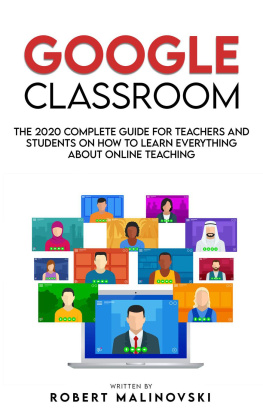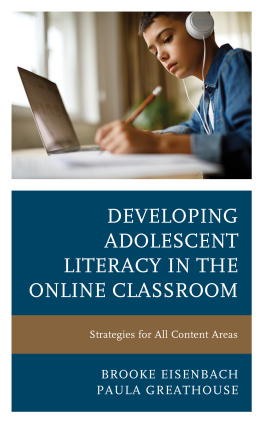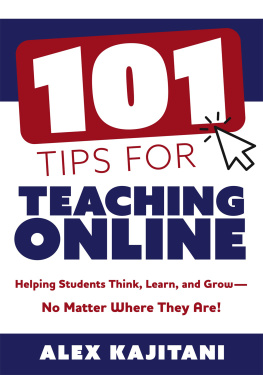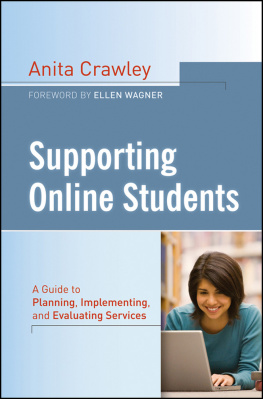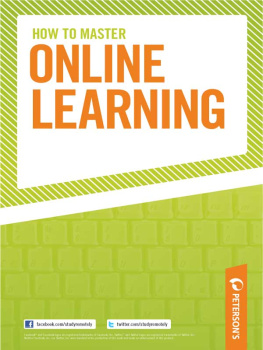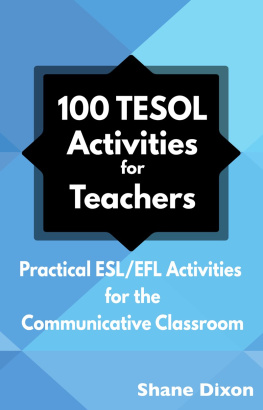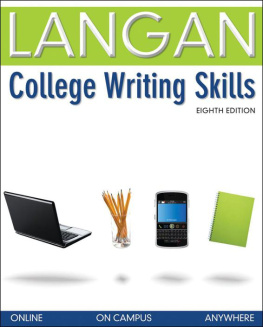ADDITIONAL
RESOURCES
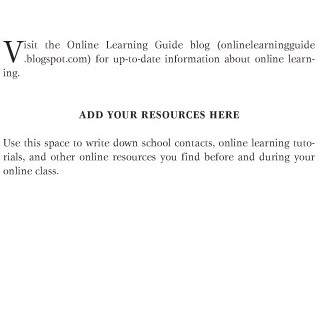
ABOUT THE AUTHOR
AND CONTRIBUTORS
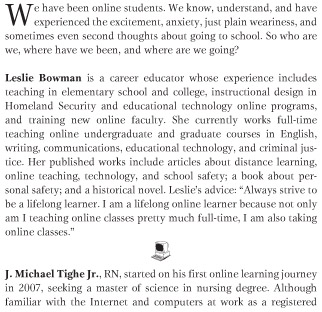
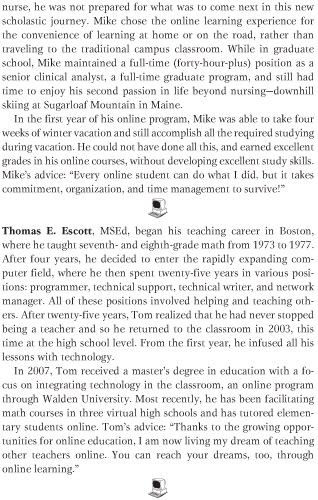
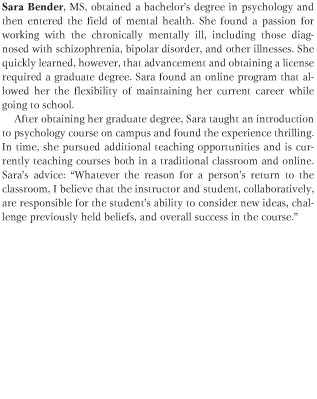

HOW DOES IT WORK?
TYPES OF ONLINE CLASSES
There are three basic types of online classes: independent study or correspondence courses, synchronous courses, and asynchronous courses. There are also several combinations of these. You will need to determine what kind of learning you prefer and then locate classes that suit your preference.
Independent Study or Correspondence Courses
Independent study or correspondence courses are not formal classes, but rather are course materials that are available to students via print or online. Students sign up and pay for a course, and then the materials are sent one of two ways. One method is for students to receive all materials through postal mail or email. The other method is for students to receive password-protected access to the materials online. In such courses, the work is completed and returned to the professor in the same manner in which the students received the course materials.
These courses work in a variety of ways; in each, students have a certain period of time in which to complete all the course work. Sometimes this is three to six months, or even up to a year. Some professors require that only one assignment be submitted at a time; then the student must wait for the grade and feedback to be returned before another assignment can be submitted. In some courses, the student completes all the work for the course and then sends it to the professor all at once.
This type of course has advantages and disadvantages. The primary advantage is that students can complete the work any time that is convenient during the timeframe of the course, from enrollment to the end date. Students may contact the professor by phone or email if they have questions about the assignments.
Another advantage is that students can move along through the course materials at their own pace. Some students like to complete a course in just a few weeks. Some students like to take their time, completing one assignment per week and thus spending only a few hours a week on their course work.
The primary disadvantage is that procrastination can all too often mean that the course is just never completed. Many students enroll in these types of courses, forget to do the work, and then get a notice that the course end date is in a week. At that point, its simply too late to do all the work in time.
Another disadvantage is that if the student sends all the course work at the same time, then there is no feedback from the professor. If an assignment is completed incorrectly, the student does not have a chance to learn from those mistakes and improve on subsequent assignments.
In cases where assignments are sent one at a time upon completion, students have to wait as long as several weeks to receive grades and feedback, especially when assignments are sent back and forth via postal mail.
One student I know took a course that required students to send assignments via postal mail to the university. A designated department assistant forwarded the assignments via postal mail to the professor, who happened to live across the country. Grades and feedback were returned to the student the same way. The entire process, for just one assignment, took about a month.
This type of online learning can be a legitimate choice; however, students should always find out how assignments and grades are sent between student and professor and how long this process will take. Correspondence courses have been around a very long time, and there are still opportunities for this type of learning. I have taken about ten courses like this and enjoyed the flexibility of completing courses quickly or slowly, depending on my personal and professional schedule at the time.
Synchronous Courses
Synchronous courses are those in which students and professor are all online at the same time, usually in a chat room, and the professor teaches in real time on the computer. Most synchronous learning is still conducted via text (typing on the computer), but the trend is rapidly moving toward voice and even video chat on the computer. This makes learning in real time on the computer very similar to going to class. Students can hear, and sometimes see, the professor talk; view charts and graphics; and ask questions and participate in discussions with classmates during the class time.
Schools that have synchronous classes schedule them just as if students were going to campus for class. Students must read the assigned material and complete the written assignments prior to class. The only difference is that students are sitting at home in front of the computer rather than sitting in a physical classroom with their classmates and professor.
Students are expected to attend online classes and professors are required to record attendance, just as in a campus class. A benefit of synchronous classes over campus classes is that if you miss class, the entire online meeting is available for you to view or listen to at a later time. But even though you dont miss lectures and explanations if you miss class, you do miss participating in discussions. Its not uncommon to see grades drop when students routinely miss online class sessions.
The scheduled real-time meetings online can be a disadvantage for some people in other ways. Synchronous class times may not suit students work or family schedule. These meetings are always in the evening and can be early or late, depending on students time zones. For example, a 9:00 p.m. meeting on the East Coast would be meeting at 6:00 p.m. on the West Coast.
Before signing up for a synchronous online class, you should find out the online class schedules, the requirements for attendance, and the penalties for missing class.
Asynchronous Online Learning
Asynchronous learning is by far the most popular and most widely used form of online learning. In asynchronous classes, students have weekly start and end dates, during which time they must complete specific assignments and discussions. There are many different ways that professors structure asynchronous classes, and this can differ even within the same school. You should always find out how a school sets up this type of online class.
The typical structure is a weekly format with discussion and writing assignments due each week. The advantage of asynchronous learning is that as long as students complete assignments by the weekly due dates, they can do the work whenever it suits them within that time frame.
Just think, youll never have to miss a family dinner with your kids because you have to be in class. You wont have to tell your boss you cant stay late at work to finish a project that is due the next day because you have to attend class. And the best part is that you will not have to miss out on another vacation opportunity because you have to attend class. Wherever you are, whatever is going on in your life at any given time, you can schedule your course work around everything else you have to do. I even know one instructor who conducted the first week of his class from the hospital.


